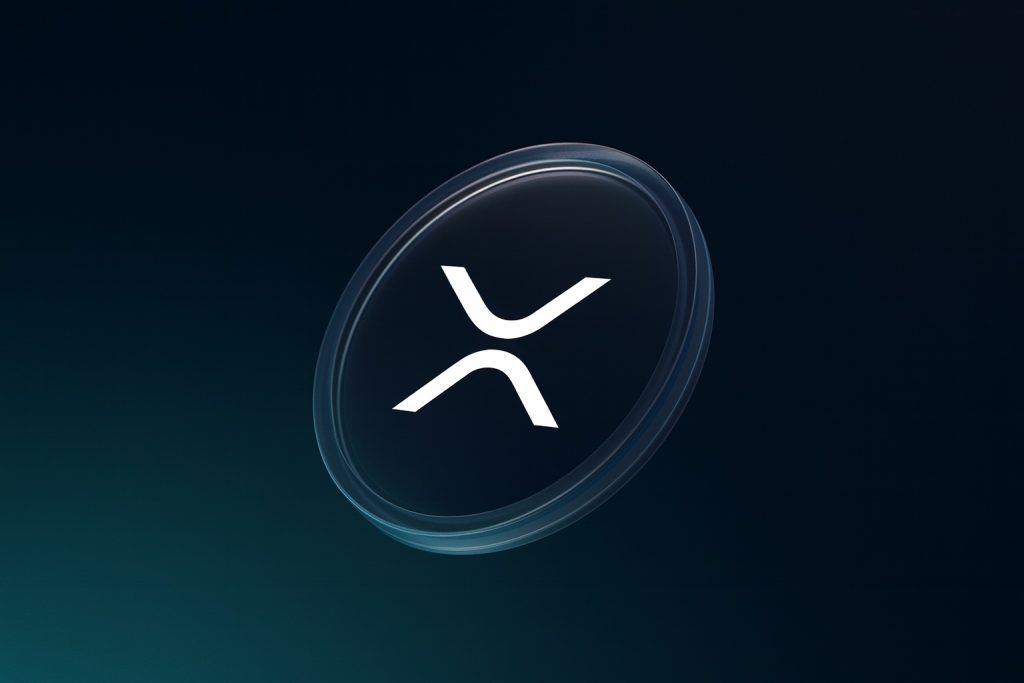- Price & Performance: PPL closed around $37.23 on Oct. 10, 2025 [1], near its 52-week high ($37.81 [2]). The stock is up roughly 14–15% year-to-date (mid‐2025 vs Jan 2025) and trades near a P/E of ~28 [3]. Market cap is about $27–28 billion [4].
- Dividend: Most recent quarterly dividend is $0.2725 (payable Oct. 1, 2025), about a 2.9% annualized yield [5]. PPL has maintained this dividend for years, yielding ~3% on current prices.
- Analyst Ratings: The consensus is a “Buy” (majority of analysts) with an average 12-month target around $37–39 [6] [7]. UBS notes an average target of ~$38.81 (about 4% above current price) [8]. Price targets range from mid-$30s to low-$40s, reflecting mixed but generally positive outlooks.
- Earnings & Guidance: PPL’s FY2025 EPS guidance is $1.75–1.87 [9] (consensus ~$1.83 [10]). Analysts expect 2025 EPS ≈$1.83–1.90 [11] [12]. In Q1 2025 PPL beat estimates (adjusted EPS $0.60 vs $0.54 exp [13]), though Q2 EPS ($0.32) missed consensus by a few cents [14] [15]. The company reaffirmed its 2025 outlook in mid-2025 [16].
- Data-Center Pipeline: PPL’s Pennsylvania utility has a massive data-center backlog (~11–14 GW advanced projects) [17] [18]. This surge in big-tech power demand underpins PPL’s recent news and growth plans. PPL formed a joint venture with Blackstone in July 2025 to build new gas-fired plants in PA for data centers [19]. In Kentucky, its LG&E/KU utilities agreed to add ~1.3 GW of gas-fired capacity for data centers [20].
- Spending Plan: PPL is investing heavily in its grid and generation. It expects about $20 billion of capital spending in 2025–2028 [21] [22] (nearly 10% annual rate-base growth). This includes new power plants, grid upgrades and customer service enhancements.
- Regulatory/Climate Policy: PPL supports Pennsylvania bills (HB1272/SB897) enabling utilities to build generation, and says it is “primed to act quickly” if they pass [23]. The company has a net-zero carbon goal by 2050 [24], aiming to retire ~2 GW of coal by 2035 [25] and invest in renewables/efficiency as part of its “clean energy strategy.”
- Market Sentiment: Short interest is modest (~4.5% of float, days-to-cover ~6) [26], implying limited bearish bets. Technicals show PPL above its 50- and 200-day moving averages [27]. TS2.tech notes that PPL “share[s] similar fundamentals” with peers like Duke Energy and CenterPoint [28], reflecting broad industry tailwinds (data centers, infrastructure).
Recent News and Developments
- Data-Center & Infrastructure Push: The big story is PPL’s data-center boom. In mid-October 2025, analysts highlight PPL’s joint venture with Blackstone to build gas-fired combined-cycle plants in Pennsylvania to serve hyperscale data centers [29]. CEO Vincent Sorgi said the venture will bring “much-needed new dispatchable generation online” in PA, helping mitigate power-price spikes and boost shareholder value [30]. Similarly, PPL’s Kentucky utilities (LG&E/KU) struck a settlement (July 2025) to add ~1.3 GW of new gas plants for expected data-center load [31]. This deal also deferred a coal retirement and adjusted a planned battery project, but PPL maintained its overall $20B infrastructure plan [32]. These moves show PPL aggressively expanding generation capacity as data-center demand grows.
- Earnings & Outlook: PPL’s latest results and guidance have been mixed-leaning-positive. In Q1 2025, the company beat earnings and enjoyed a boost from warm weather and higher transmission rates [33]. Q2 results (Jul 2025) saw revenue rise ~7–8% but EPS of $0.32 slightly missed estimates [34] [35]. Importantly, management reaffirmed full-year guidance (2025 EPS $1.75–1.87 [36]) and long-term growth targets (6–8% annual EPS/dividend growth through 2028). Analysts (Zacks) even raised Q4 2025 EPS estimates to $0.41 [37]. PPL’s dividend remained $0.2725 (payable Oct 1, 2025) [38].
- Dividends & Capital Allocation: PPL continues its steady dividend (yield ~2.9%) [39]. It has no announced share buybacks, focusing on reinvestment. Management emphasizes a balanced capital allocation: funding growth projects (data centers, grid upgrades) while maintaining payout targets. Insiders have been light on trading PPL shares (COO Bonenberger sold ~2,165 shares in Jul 2025 [40]).
- Regulatory & Environment: On the regulatory front, Pennsylvania lawmakers are considering bills (HB1272/SB897, and another data-center bill HB1834) that would let utilities build generation and recover costs for data centers. PPL says it “supports” these measures and is ready to act quickly if they pass [41]. In Kentucky, PPL’s plan was approved subject to conditions (see above). On climate, PPL publicly targets net-zero carbon by 2050 [42], with interim goals (70% reduction by 2035). It plans to retire ~2,000 MW of coal by 2035 [43] and invest in clean energy R&D. Recent news hasn’t highlighted any major environmental policy changes affecting PPL, though the company remains focused on integrating renewables and efficiency (it even withdrew a proposed 400 MW battery project to align with new plans [44]).
Stock Performance & Valuation
PPL shares have risen steadily in 2025. After trading near $31 in early 2024, PPL climbed above $37 by Oct 2025 [45]. Key metrics (Oct 2025) include a P/E of ~27–28, a PEG ratio ~2.6, and a beta ~0.66 [46]. Its 50-day moving average (~$36.38) sits just below price, and the 200-day (~$35.39) confirms an uptrend [47]. The 52-week range is $31.22–$37.81 [48].
The stock’s valuation looks moderate among utilities. Analysts’ consensus price target (~$37.40 [49] to $38.8 [50]) implies only low single-digit upside, reflecting cautious optimism. TS2.tech notes PPL’s financial profile is similar to peers (regulatory utilities like Duke, Alliant, CenterPoint) [51]. In fact, CenterPoint recently upped its own 2025 EPS forecast, a trend also seen at PPL. PPL yields ~2.9% and has stable cash flows, which appeals to income-oriented investors. However, its P/E is higher than some old-line utilities, reflecting the market’s assignment of some growth value (largely from data center contracts).
Technical/Volume: Trading volumes have been moderate (3–6 million shares daily). Short interest is relatively low: about 33.5 million shares short (~4.5% of float) as of mid-Sept 2025 [52]. A days-to-cover ratio of ~6 indicates only mild bearish positioning [53]. This suggests most market participants are not heavily betting against PPL. (By comparison, a short ratio above ~10 would indicate pessimism [54], which PPL is well under.)
Analyst Forecasts & Commentary
Wall Street’s analysts are broadly positive but not unanimous. MarketBeat reports that Weiss Ratings reaffirmed a “Buy” (B) on PPL on Oct. 9 [55], citing the company’s solid backlog and guidance. Morgan Stanley (late Sep) and Barclays (Jul) both maintain favorable views: MS has an Overweight rating with a ~$38 target [56], while Barclays rated PPL a Strong Buy in July [57]. Evercore ISI initiated coverage in mid-2025 with an “Outperform” and lofty $43 target [58]. At the same time, Wall Street Zen downgraded PPL to a Sell (Sept 2025) due to near-term uncertainty [59].
In aggregate, two analysts rate “Strong Buy,” eight “Buy,” and one “Hold,” giving a consensus “Buy” (or “B”) rating [60] [61]. The average 1-year target is about $37.40 [62] [63] – roughly flat to slightly above recent prices. UBS (Oct 10) calculates an average target $38.81 [64]. These targets assume moderate EPS growth (2025 EPS ~$1.83–$1.90 [65] [66]) and continued dividend payouts.
Notable quotes: Zacks Research recently bumped Q4 2025 EPS estimate to $0.41 (from $0.40), reflecting a positive view on late-year earning power [67]. They noted Q2 revenue grew 7.7% [68], even though EPS lagged. UBS, in its Oct 10 research, projects 2025 non-GAAP EPS ~$1.90 [69] and pointed out that PPL’s average target implies ~+4% upside [70]. No major bank outright cut PPL or became bearish – the lowest stance is “neutral” (UBS) [71].
Overall, analysts highlight the data-center thrust as a growth catalyst. For example, Reuters quoted PPL executives in April 2025 emphasizing that long-term data-center deals are in hand and ~$700–850M of capex will connect those loads [72]. UBS’s note mentions minimal regulatory drag on earnings but did not foresee big catalysts beyond known developments [73] [74].
Investor Sentiment & Outlook
Public and investor sentiment on PPL appears cautiously optimistic. The low short interest (4–5%) suggests few investors are betting on a drop [75]. Institutional ownership is high (77% of shares held by funds) [76], implying steady demand from long-term portfolios. Put/call option activity is low (put/call ratio ~0.82 [77], indicating bullish bias).
Investor commentary (on forums and social media) has noted the appeal of PPL’s steady dividend and its positioning to profit from tech data centers. The company’s multi-state, regulated footprint is seen as relatively safe amid economic uncertainty. TS2.tech commented that PPL, like peers, is benefiting from a “new hunger for electrons” [78]. This reflects a view that utilities securing data-center contracts could see growth above the industry norm.
That said, some market watchers caution that PPL is already priced for much of its known growth. The stock has been range-bound around the high-$30s, and any big disappointment (e.g. slow data-center announcements or unfavorable rate cases) could pressure the shares. Rising interest rates could also weigh on utility multiples. On the upside, continued deal announcements or exceeding guidance could spark further gains.
Analysts and the company alike emphasize PPL’s balanced profile: it offers reliable regulated earnings plus targeted growth projects. In the words of CEO Sorgi, PPL’s mix of regulated businesses and growth pipelines makes it a “biggest winner” from the data center trend [79]. As one TS2 analyst put it, PPL’s peer group shares in near-term demand tailwinds, suggesting the stock’s fundamentals are sound [80].
Sources: Recent financial reports and news releases from PPL [81] [82]; Reuters and industry articles [83] [84] [85]; analyst commentaries on MarketBeat and Nasdaq [86] [87] [88]; data from PPL investor site and stock databases [89] [90] [91]. (PPL-related pieces also cited on ts2.tech [92].)
References
1. www.investing.com, 2. www.marketbeat.com, 3. www.marketbeat.com, 4. www.marketbeat.com, 5. www.marketbeat.com, 6. www.marketbeat.com, 7. www.marketbeat.com, 8. www.nasdaq.com, 9. www.marketbeat.com, 10. www.marketbeat.com, 11. www.marketbeat.com, 12. www.nasdaq.com, 13. www.reuters.com, 14. www.marketbeat.com, 15. www.marketbeat.com, 16. www.marketbeat.com, 17. www.reuters.com, 18. www.utilitydive.com, 19. investors.pplweb.com, 20. www.utilitydive.com, 21. www.utilitydive.com, 22. www.utilitydive.com, 23. www.utilitydive.com, 24. www.pplweb.com, 25. www.pplweb.com, 26. www.marketbeat.com, 27. www.marketbeat.com, 28. ts2.tech, 29. investors.pplweb.com, 30. investors.pplweb.com, 31. www.utilitydive.com, 32. www.utilitydive.com, 33. www.reuters.com, 34. www.marketbeat.com, 35. www.marketbeat.com, 36. www.marketbeat.com, 37. www.marketbeat.com, 38. www.marketbeat.com, 39. www.marketbeat.com, 40. www.marketbeat.com, 41. www.utilitydive.com, 42. www.pplweb.com, 43. www.pplweb.com, 44. www.utilitydive.com, 45. www.marketbeat.com, 46. www.marketbeat.com, 47. www.marketbeat.com, 48. www.marketbeat.com, 49. www.marketbeat.com, 50. www.nasdaq.com, 51. ts2.tech, 52. www.marketbeat.com, 53. www.marketbeat.com, 54. www.marketbeat.com, 55. www.marketbeat.com, 56. www.marketbeat.com, 57. www.marketbeat.com, 58. www.marketbeat.com, 59. www.marketbeat.com, 60. www.marketbeat.com, 61. www.marketbeat.com, 62. www.marketbeat.com, 63. www.marketbeat.com, 64. www.nasdaq.com, 65. www.marketbeat.com, 66. www.nasdaq.com, 67. www.marketbeat.com, 68. www.marketbeat.com, 69. www.nasdaq.com, 70. www.nasdaq.com, 71. www.nasdaq.com, 72. www.reuters.com, 73. www.reuters.com, 74. www.nasdaq.com, 75. www.marketbeat.com, 76. www.marketbeat.com, 77. www.nasdaq.com, 78. ts2.tech, 79. www.utilitydive.com, 80. ts2.tech, 81. investors.pplweb.com, 82. www.pplweb.com, 83. www.reuters.com, 84. www.utilitydive.com, 85. www.utilitydive.com, 86. www.marketbeat.com, 87. www.marketbeat.com, 88. www.nasdaq.com, 89. www.investing.com, 90. www.marketbeat.com, 91. www.marketbeat.com, 92. ts2.tech







